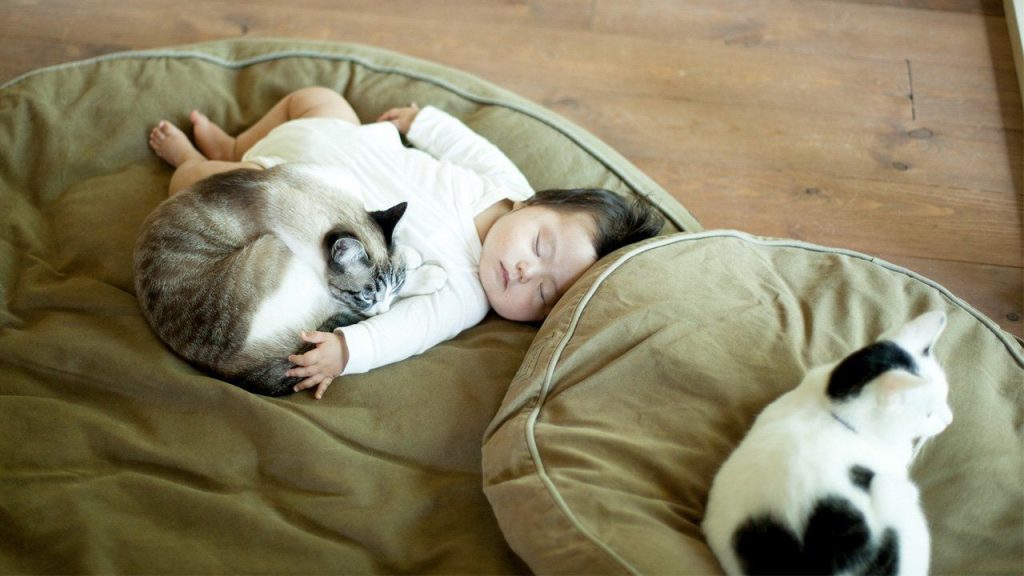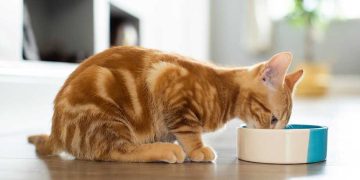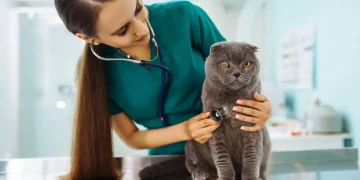When we think of grooming, dogs often come to mind first, as they are more frequently associated with baths, haircuts, and nail trims. However, cats also benefit greatly from regular grooming and beauty care. While cats are generally more self-sufficient in maintaining their cleanliness compared to dogs, certain aspects of grooming are still essential for their health and well-being. Regular grooming not only helps keep your cat’s coat shiny and healthy but also improves their overall comfort and prevents various health issues. In this article, we’ll explore the importance of grooming for cats and discuss the key areas of their beauty care routine.
1. The Importance of Regular Grooming for Cats
While it’s true that cats are excellent self-groomers and spend a significant portion of their time grooming themselves, they still require help in certain areas. Regular grooming can prevent matting, reduce shedding, and even help detect potential health issues early.
- Matting Prevention: Cats, especially long-haired breeds, can develop tangles or mats in their fur if left unchecked. Mats can become painful for your cat, and in severe cases, they may lead to skin infections or irritations. Regular grooming helps prevent these mats and keeps their coat smooth.
- Shedding Control: Even though cats groom themselves, they still shed hair. Regular brushing helps remove loose hair, reducing the amount of fur your cat leaves around your home. It also helps prevent hairballs, a common issue for cats, by removing excess hair before they can ingest it.
- Health Monitoring: Grooming sessions give you an opportunity to check your cat for signs of illness. During brushing, you can examine their skin for lumps, bumps, or areas of irritation. This can be particularly useful in catching health problems early, such as flea infestations, infections, or skin conditions.
2. Brushing: A Key Part of Cat Grooming
Brushing is perhaps the most important aspect of grooming a cat. While cats naturally groom themselves by licking their fur, they cannot reach every part of their body, and some areas may be prone to matting or tangling.
- For Short-Haired Cats: Short-haired cats still benefit from regular brushing, though less frequently than long-haired cats. Brushing helps remove loose fur and dander, which can reduce allergies in both your cat and yourself. It also prevents hairballs and promotes healthy circulation by stimulating the skin.
- For Long-Haired Cats: Long-haired cats, such as Persians or Maine Coons, need more frequent brushing to keep their fur free of tangles and mats. Aim to brush long-haired cats at least 3-4 times a week. If their fur becomes matted, it may require the help of a professional groomer to remove the tangles.
- Choosing the Right Brush: Different types of brushes are suitable for different coat types. For example, a slicker brush is ideal for removing tangles and mats, while a bristle brush works well for distributing natural oils and smoothing the coat. Regular brushing not only keeps your cat’s coat in good condition but also provides a bonding opportunity between you and your pet.
3. Bathing Cats: Is It Necessary?
Unlike dogs, cats generally don’t require frequent baths. They groom themselves efficiently and keep their fur clean through regular licking. However, there are certain situations in which a bath may be necessary for your cat’s well-being.
- When to Bathe Your Cat: Bathing may be required if your cat has gotten into something sticky or dirty, such as oil, mud, or substances that they cannot clean off themselves. Cats with medical conditions such as allergies or skin infections may also need occasional baths with special medicated shampoos.
- Bathing Procedure: If you need to bathe your cat, use a cat-specific shampoo, as human shampoos can be too harsh for their sensitive skin. It’s important to make the experience as stress-free as possible. Prepare everything beforehand, such as towels and the right shampoo, and keep the water lukewarm—not too hot or cold. Gently wet your cat, lather them up, and rinse thoroughly. Always dry your cat with a towel after the bath to keep them warm and comfortable.
- Grooming Without Bathing: If your cat doesn’t like water or you prefer not to bathe them, you can clean their fur using cat wipes or a damp cloth to remove dirt and grime. Regular brushing can also help maintain a clean coat without the need for frequent baths.
4. Nail Trimming: An Essential Grooming Task
Although cats typically keep their claws well-maintained through scratching, they may still need occasional nail trimming to prevent overgrowth or injury. Overgrown claws can become painful, leading to difficulty walking or getting caught in furniture or carpets.
- Why Trim Cat Nails?: While most indoor cats do not wear down their claws as much as outdoor cats, their nails can grow too long, making them prone to breaking, splitting, or causing discomfort. Trimming your cat’s nails every 2-4 weeks is usually sufficient, though some cats may require more frequent trims.
- How to Trim Your Cat’s Nails: Use a pair of cat-specific nail clippers and carefully trim only the sharp tip of the nail, avoiding the quick (the pink part of the nail that contains blood vessels). If you’re unsure how to do this safely, a veterinarian or professional groomer can show you the proper technique.
5. Ear and Eye Cleaning
Regular ear and eye care is also part of your cat’s beauty routine. While cats are generally good at self-maintaining their ears and eyes, some breeds or cats with certain health conditions may require additional attention.
- Ear Cleaning: Check your cat’s ears regularly for signs of infection, such as redness, discharge, or a foul odor. If you notice any of these symptoms, it may be necessary to clean their ears or take them to the vet for treatment. Use a cat-safe ear cleaner and a cotton ball to gently wipe the outer ear canal. Never insert anything into the ear canal, as this can cause injury.
- Eye Cleaning: Some cats, particularly those with flat faces like Persians or Himalayans, are prone to eye discharge, which can lead to staining around the eyes. Use a damp cotton ball or tissue to gently wipe away any discharge. If your cat has persistent eye problems or discharge, it may be a sign of an underlying issue, such as an infection or allergies.

6. Dental Care for Cats
While cats don’t need to visit the dentist as often as humans, their dental health is just as important. Poor oral hygiene can lead to serious health issues, including gum disease, tooth decay, and even heart or kidney problems.
- Why Is Dental Care Important?: Regular dental care helps prevent tartar buildup, gum disease, and bad breath. In fact, by the time cats are 3 years old, over 50% of them will have some form of dental disease.
- How to Care for Your Cat’s Teeth: The best way to care for your cat’s teeth is by brushing them regularly with a cat-safe toothbrush and toothpaste. Aim to brush your cat’s teeth at least a few times a week, if not daily. You can also provide dental treats or toys designed to help reduce tartar buildup.
7. Regular Health Checks
During grooming sessions, it’s also a good idea to perform a quick health check. Look for any signs of discomfort or health issues such as skin rashes, lumps, or abnormal behavior. Pay attention to your cat’s overall condition, as any significant changes can be early signs of illness.
- Monitor for Fleas and Parasites: Cats are prone to flea infestations, especially those who go outdoors. During grooming, check for signs of fleas, flea dirt, or other parasites that might affect your cat’s skin and health.
8. Consider Professional Grooming
Some cats may not enjoy being groomed at home, especially if they are more anxious or if their fur is particularly difficult to maintain. In these cases, a professional groomer can help.
- Grooming Services: A professional groomer can provide services like full-body baths, nail trims, fur de-matting, and ear cleaning. For cats with more complex grooming needs, a groomer will have the right experience and equipment to handle them safely.
Conclusion
In conclusion, while cats are excellent at grooming themselves, regular beauty care is still important to maintain their health and comfort. Brushing, nail trimming, ear and eye cleaning, and dental care should all be part of your cat’s regular grooming routine. Whether you are performing the grooming yourself or enlisting the help of a professional, taking the time to care for your cat’s grooming needs will not only improve their appearance but also their overall well-being. Regular grooming provides you with an opportunity to bond with your cat and ensures that any potential health issues are caught early.























































